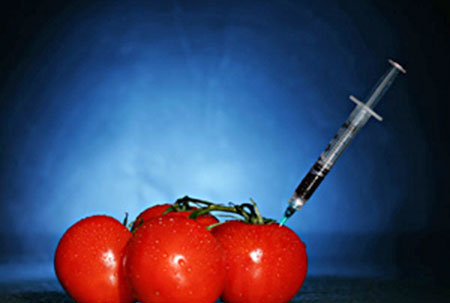|
by Thomas Henry
from
NaturalNews Website
What the public doesn't know won't hurt
them.
It argues,
For the Scientific American, this would only increase consumer costs, declaring that "such labels have limited people's options" in Europe, where it concedes that companies dropped GM ingredients after consumers avoided them, bemoaning that,
Public health lawyer Michele Simon, one of several critics who spoke out against the "unscientific" editorial, noted the "familiar ring" to positions used by GM seed corporations when opposing Prop 37, which would have mandated labeling in California.
Stacy Malkan, former director of the Yes on 37 campaign, zeroed in on the claim that labeling GMO ingredients would increase the costs for families by $400 per year, noting that it was based on a study favored by biotech and later debunked by a University of California at Davis study.
Nevertheless, the Scientific American
spreads worries that proper labeling requirements would force the
more than 70% of foods produced with GM ingredients off the shelves,
and as a result, "we would all have to pay a premium on non-GMO
foods."
Ironically, Scientific American itself warned in 2009,
The magazine's editors even noted at the time how the likes of,
...have even threatened litigation for
using their GM seeds in unauthorized studies, essentially chilling
independent researchers, making industry-sponsored research
oftentimes the only available information on a product's efficacy
and safety.
The Institute for Responsible Technology identified 65 key concerns over GM foods based upon the research. In just one illustrative example, Russian scientist Irina Ermakova found that more than half of the offspring from rats fed GM soy died within three weeks in a peer reviewed study.
While the ultimate effects on humans
remains unstudied, there is obviously a need for further research
and clear labeling to indicate which foods contain genetically
modified ingredients.
...Are
a Bad Idea September 6, 2013
from
ScientificAmerican Website This article was originally published with the title 'Fight the GM Food Scare'
In November 2012 California voters rejected the similar Proposition 37 by a narrow majority of 51.4 percent.
The issue, however, is in no way simple.
For the past 20 years Americans have been eating plants in which scientists have used modern tools to insert a gene here or tweak a gene there, helping the crops tolerate drought and resist herbicides.
Around 70 percent of processed foods in the U.S.
contain genetically modified ingredients.
...agree that GMOs are just as safe as other foods.
Compared with conventional breeding techniques - which swap giant chunks of DNA between one plant and another - genetic engineering is far more precise and, in most cases, is less likely to produce an unexpected result.
The U.S. Food and Drug Administration has tested all the GMOs on the market to determine whether they are toxic or allergenic. They are not.
(The GMO-fearing can seek out "100 Percent
Organic" products, indicating that a food contains no genetically modified
ingredients, among other requirements.)
By 1999, to avoid labels that might drive customers away, most major European retailers had removed genetically modified ingredients from products bearing their brand.
Major food producers such as Nestlé followed
suit. Today it is virtually impossible to find GMOs in European
supermarkets.
Private research firm Northbridge Environmental Management Consultants estimated that Prop 37 would have raised an average California family's yearly food bill by as much as $400.
The measure would also have required farmers,
manufacturers and retailers to keep a whole new set of detailed records and
to prepare for lawsuits challenging the "naturalness" of their products.
These
farmers were able to buy more food - and food of greater nutritional value -
for their families.
Approximately three quarters of a cup of Golden
Rice provides the recommended daily amount of vitamin A; several tests have
concluded that the product is safe. Yet Greenpeace and other anti-GMO
organizations have used misinformation and hysteria to delay the
introduction of Golden Rice to the Philippines, India and China.
Another group of scientists has created corn
with 169-fold the typical amount of beta-carotene, six times as much vitamin
C and double the folate.
Ultimately, we are deciding whether we will continue to develop an immensely beneficial technology or shun it based on unfounded fears.
|


